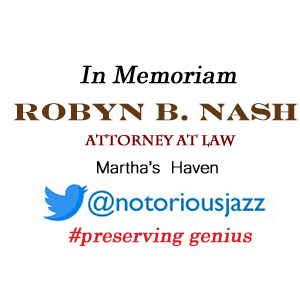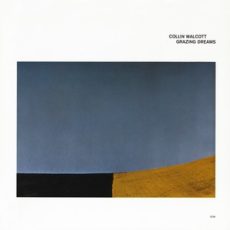
Daily Dose Of Jazz…
Collin Walcott was born on April 24, 1945 in New York City, New York. He studied violin and tympani in his youth, and studied percussion at Indiana University School of Music. After graduating in 1966, he went to the University of California, Los Angeles, and studied sitar under Ravi Shankar and tabla under Alla Rakha.
Walcott moved to New York and blended bop and oriental music with Tony Scott in 1967–69. Around 1970 he joined the Paul Winter Consort and co-founded the band Oregon. These groups, along with the trio Codona, which was founded in 1978, combined jazz improvisation and instrumentation with elements of a wide range of classical and ethnic music.
He played with Miles Davis on his 1972 album On the Corner, had three releases under his own name on ECM Records. He taught at the Naropa Institute in Boulder, Colorado.
Sitar and tabla player Collin Walcott was killed in a bus crash in Magdeburg, East Germany on November 8, 1984 while on a tour with Oregon.
More Posts: bandleader,educator,history,instrumental,jazz,music,sitar,tabla
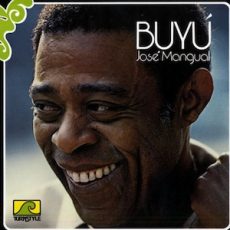
Daily Dose Of Jazz…
Jose Mangual Sr. was born on March 18, 1924 in Juana Diaz, Puerto Rico. He began playing percussion at the age of ten and by 1938 moved to New York at the age of 14. In 1952 he began playing timbales and percussion for Machito’s Orchestra.
In the 1950s Mangual played with the godfather of modern-day salsa Arsenio Rodriguez and with Latin jazz pioneer Cal Tjader. Then he joined Erroll Gardner’s band with whom he traveled the world, playing jazz for international audiences. During this time he performed and recorded with Cannonball Adderley, Sarah Vaughn, Herbie Mann. and appeared on Count Basie’s April in Paris, Miles Davis’ Sketches of Spain, Dizzy Gillespie’s Talkin’ Verve, Tito Puente’s Babarabatiri, Willie Bobo’s Spanish Grease, Gato Barbieri’s Viva Emiliano Zapata, as well as on multiple Charlie Parker’s compilations.
He has also performed with Dexter Gordon, Carmen McRae, Jorge Dalto, Stan Getz, Louis Jordan, Ray Charles, Tito Rodriguez, Xavier Cugat, Tito Puente and Chano Pozo.
In the 1970s, Mangual recorded two instructional albums Buyú and José Mangual* & Carlos “Patato” Valdez* – Understanding Latin Rhythms Vol. 1 with Carlos “Patato” Valdez for the drum maker Latin Percussion.
In 1986 he co-wrote and recorded Los Mangual – Una Dinastia with his sons Jose, Jr. and Luis Mangual. In 2001 he was posthumously inducted into the International Latin Music Hall of Fame.
Percussionist Jose Mangual Sr., world renowned for his bongo drum performances and recordings during the 1940s and 1950s, died on September 4, 1998 in New York City.
More Posts: bongos,history,instrumental,jazz,music,percussion
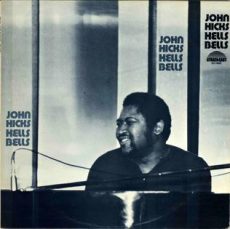
Daily Dose Of Jazz…
John Josephus Hicks Jr. was born December 21, 1941 in Atlanta, Georgia, the eldest of five children. As a child he moved around the United States as his father, Rev. John Hicks Sr, took up jobs with the Methodist church. His mother was his first piano teacher after he began playing at six or seven in Los Angeles, California. He took organ lessons, sang in choirs and tried the violin and trombone. Once he learned to read music around the age of 11, he started playing the piano in church.
His development accelerated once his family moved to St. Louis, Missouri when Hicks was 14 and he settled on the piano. Attending Sumner High School and played in schoolmate Lester Bowie’s band, the Continentals, which performed in a variety of musical styles. Hicks worked summer gigs in the southern United States with blues musicians Albert King and Little Milton with the latter providing his first professional work in 1958.
He studied music in 1958 at Lincoln University in Pennsylvania, where he shared a room with drummer Ronald Shannon Jackson. He also studied for a short time at the Berklee School of Music in Boston, Massachusetts before moving to New York in 1963.
In New York, John first accompanied singer Della Reese, then went on to play with Joe Farrell, Al Grey, Billy Mitchell, Pharoah Sanders, Jimmy Witherspoon, Kenny Dorham and Joe Henderson before joining Art Blakey’s Jazz Messengers in 1964. From 1965 to 1967 he worked on and off with vocalist Betty Carter, then joined Woody Herman’s big band, where he stayed until 1970, playing as well as writing arrangements for the band.
From 1972 to 1973, Hicks taught jazz history and improvisation at Southern Illinois University. From the 1970s onward he had a prolific career as a leader recording his debut in England followed by fifty-three more albums and as a sideman he recorded 300.
Towards the end of his life, he taught at New York University and The New School in New York. In 2006 John played in a big band led by Charles Tolliver, recorded his final studio album On the Wings of an Eagle.
Pianist, composer and arranger John HIcks, whose collection of papers, compositions, video and audio recordings are held by Duke University, died from internal bleeding on May 10, 2006.
More Posts: arranger,bandleader,composer,history,instrumental,jazz,music,piano
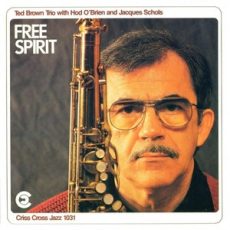
Daily Dose Of Jazz…
Theodore G. Brown was born into a musical family on December 1, 1927 in Rochester, New York. He learned banjo and violin from his father who also taught him to read music at six, and clarinet and tenor sax from his uncle. After playing in army bands from 1945 to 1947 and then in Hollywood, California for the following year, he moved to New York City.
He worked with Lennie Tristano and fellow pupils and associates Lee Konitz and Warne Marsh for two years beginning in 1955. During that time Ted recorded a session for Vanguard, worked with Ronnie Ball, and played a date in Hollywood with Warne Marsh.
>Returning to New York City he worked extensively in clubs. Brown recorded with Konitz in 1959, and again in 1976, while leading his own group in the late Seventies. He also worked and recorded with Art Pepper and Hod O’Brien.
Cool jazz tenor saxophonist Ted Brown, who recorded as a leader or co-leader thirteen albums and as a sideman was a part of five albums with Tristano, Marsh and Konitz, is 97 years old.
More Posts: bandleader,history,instrumental,jazz,music,saxophone
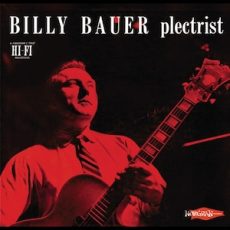
Daily Dose Of Jazz…
William Henry Bauer was born in New York City on November 14, 1915 and as a child he played ukulele and banjo before switching to guitar. He played with the Jerry Wald band and recorded with Carl Hoff and His Orchestra in 1941, before joining Woody Herman in 1944 as a member of the First Herd. In 1946, he played with Benny Goodman and Jack Teagarden.
Working in small groups led by bassist Chubby Jackson and trombonist Bill Harris, Bauer established himself as a soloist in the bebop movement. In 1946, he began working with Lennie Tristano, enjoying a natural synergy in their style and approach. Their development of intuitive music led to the 1949 session Crosscurrents. He would go on to become a member of the NBC Tonight Show band in New York City and played in the Today Show band at the start of early television.
Continuing his pioneering guitar work in a partnership with Lee Konitz, whose avant-garde saxophone work was a perfect match for Billy’s guitar. The dialogue between the musicians crossed styles from bop and cool to the avant-garde. Their recordings have been described as “some of the most beautiful duet recordings in jazz. Duet For Saxophone and Guitar was an unusual instrument pairing which has been described as redefining the role of jazz guitar.
Bauer made one album under his own name, Plectrist, in 1956. Later, he arranged the song No One that appeared on the album Henry Golis Presents Good Music with Friends in 2007.
Guitarist Billy Bauer died of pneumonia in New York at the age of 89 on June 17, 2005.
More Posts: bandleader,guitar,history,instrumental,jazz,music


